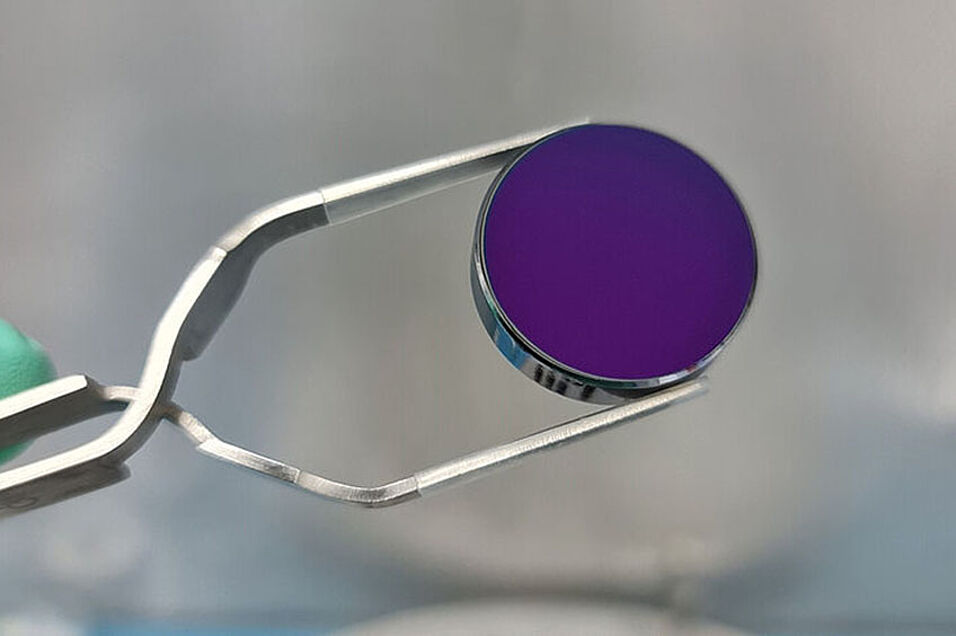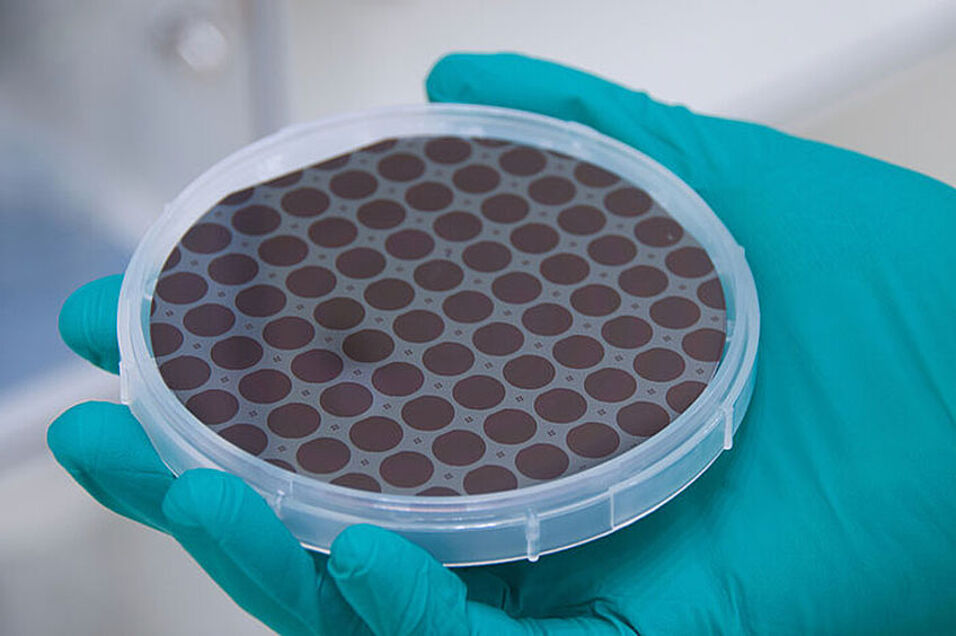An international team of researchers from the United States, Austria, and Switzerland has demonstrated the first true supermirrors in the mid-infrared spectral region. These mirrors are key for many applications, such as optical spectroscopy for environmental sensing, as well as laser cutting and welding for manufacturing. This milestone was recently published in Nature Communications.
In the field of high-performance mirrors, everyone chases the impossible: coatings with perfect reflectivity. In the visible range of wavelengths (i.e., between 380 nm and 700 nm), advanced metallic mirrors achieve reflectivities as high as 99%, which means 1 photon is lost for every 99 reflected. That may seem impressive, but in the near-infrared region (i.e., between ~780 nm and 2.5 μm), mirror coatings have demonstrated 99.9997% reflectivity, losing only 3 photons out of 1 million reflected. There has been a long-standing desire to extend this supermirror level of performance into the mid-infrared (wavelengths from 2.5 µm to 10 µm and beyond), where advancements can be enabled in trace gas sensing tasks related to climate change and biofuels, as well as in industrial applications such as laser machining and nanofabrication. Until now, the best mid-infrared mirrors lose roughly 1 out of every 10.000 photons, or about 33 times worse than in the near-infrared.
As described in the article published in Nature Communications [1], an international collaboration of researchers from Thorlabs’ Crystalline Solutions (Santa Barbara, CA), the Christian Doppler Laboratory for Mid-Infrared Spectroscopy at the University of Vienna (Austria), the U.S. National Institute of Standards and Technology (NIST), and the University of Neuchâtel (Switzerland) has now demonstrated the first true mid-infrared supermirrors. These mirrors lose only 8 photons out of 1 million, achieving a reflectivity of 99.99923%. Achieving such extreme reflectivities required a combined mastery of materials, mirror design, and manufacturing processes.
To realize this first generation of mid-infrared (MIR) supermirrors, the researchers have conceived and demonstrated a new paradigm in coatings. They combined conventional thin-film coating techniques and novel semiconductor materials and methods to overcome the material constraints in the challenging mid-infrared region. According to Garrett Cole, Technology Manager of Thorlabs’ Crystalline Solutions team, "This work builds upon our pioneering efforts in substrate-transferred crystalline coatings. Extending this platform to longer wavelengths, our international collaboration is the first to demonstrate a MIR coating method with undesirable absorption and scatter losses below 5 parts per million." These mirrors leverage the extreme purity and excellent structural quality of molecular beam epitaxy, an advanced process used to manufacture many different semiconductor devices, to produce monocrystalline GaAs/AlGaAs multilayers with negligible absorption and scatter. This starting material is then turned into high-performance mirrors using advanced microfabrication techniques including direct "fusion" bonding onto a high-quality conventional non-crystalline thin-film interference coating deposited at the University of Neuchâtel.
Fabrication of these groundbreaking mirrors was only half the challenge. The scientists also needed to methodically measure the mirrors to prove their superior performance. Gar-Wing Truong, Lead Scientist at Thorlabs Crystalline Solutions, said, "It was a tremendous team effort to bring together the equipment and expertise to definitively show total losses as low as 7.7 parts per million, which is 6 times better than previously achieved with any conventional MIR coating technique." Co-lead author Lukas Perner, Scientist at the University of Vienna, added, "As a co-inventor of this novel coating paradigm, it was both exciting and rewarding to put these mirrors to the test. Our combined efforts in innovative mirror technology and advanced characterization methods have allowed us to demonstrate their outstanding performance, breaking new ground in the MIR."
An immediate application of these novel MIR supermirrors is to greatly improve the sensitivity of optical devices that are used to measure trace amounts of gases. These devices, called cavity ringdown spectrometers (CRDS), can detect and quantify miniscule amounts of important environmental markers, such as carbon monoxide. The team turned to NIST research chemists, Adam Fleisher and Michelle Bailey, who have long worked with this technique. In a proof-of-concept experiment that put these mirrors through their paces, Fleisher and Bailey showed that the mirrors already out-perform the state-of-the-art. "Low-loss mirrors make it possible to achieve exceptionally long optical pathlengths in a small device – in this case it’s like compressing the distance from Philadelphia to NYC down to the span of a single meter," Bailey said. "This is a key advantage for ultra-sensitive spectroscopy in the MIR spectral range, including for measurement of radioisotopes which are important for nuclear forensics and carbon dating."
Original publication:
[1] G.-W. Truong, L. W. Perner, D.M. Bailey, G. Winkler, S. B. Cataño-Lopez, V. J. Wittwer, T. Südmeyer, C. Nguyen, D. Follman, A. J. Fleisher, O. H. Heckl and G. D. Cole "Mid-Infrared supermirrors with finesse exceeding 400 000", Nature Communications (2023)
DOI: 10.1038/s41467-023-43367-z


